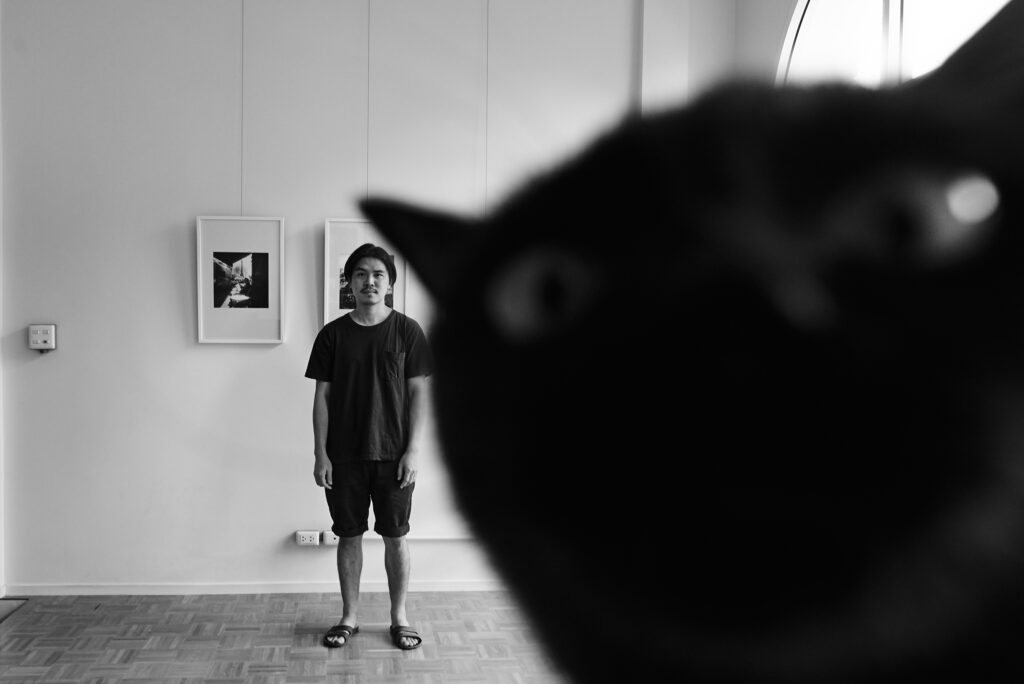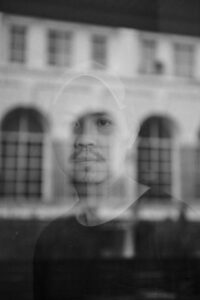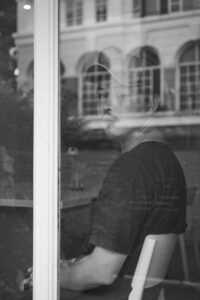Photographer: Thanwa Lujintanon
Translator : Dr.Wattana K.
“When I was accepted to work with him, he asked me casually whether I had a girlfriend. If I did, I would have to break up with her.”
He answered us when being asked how he had become a personal photographer to the ex-prime minister who had been in the office for seven years. That answer, really, amazed us of how much the truth really has been. “I worked with the magazine oom at that time and had an opportunity to take photos of Khun Vittayen (Mr. Vittayen Muttamara – an ex-MP candidate under the Democracy Party). The interview that day was about the sea because he was a diving instructor as well as an MP candidate. After the interview, he invited me to try diving. I refused because I was afraid. I know it is beautiful, but willing to be an onlooker. He further asked me whether I was interested to work with Mr Abhisit Vejjajiva. He told me if I was interested, send in my portfolio. So I sent in my portfolio to Khun Sathit (Mr.Sathit Wongnongtoey – the ex-minister of the Office of the Prime Minister). He took charge of finding the personal photographer for the prime minister. At first, it was a three-month documentary project. On the audition, it was the day Mr. Abhisit was making a documentary called ‘Trust Thailand with Prime Minister Abhisit’ aired every Sunday. I thought there must be many photography candidates. Things were inactive for seven months and then one day the questions about when I could start working and whether I had a girlfriend came along…That’s it.”
Working with the Prime Minister, Peerapat had to go places with him six days and a half a week. He accepted that being single, at that time, was right considering the amount of work he had to cover for the period of three months. “Which girl would be able to accept that?” He talked with a laugh. “Being at work all the time, I really enjoyed it. I thought I had a little time, only three months, to collect experiences. I had to break not only my own ice, but his as quickly as possible because of the time restriction.”

“But I can see his progression,” he recalled. “It started from the selection of lenses. I mainly use 50 mm. For this project, sometimes the tele or wide were a must. I borrowed from my juniors, but I did not like them. They did not represent me. I believe that all of us have to start from what we like, then serve others. When I saw him through the tele lenses, our interactions came out negative. It took us farther away than before. Apart from that feeling, the lens is so heavy. From that point onwards, he saw me at his eye range. That broke the ice between us. Seeing me often, talking to me often, from just walking by to saying hello to calling my name to, eventually, calling my nickname. After two months, I had to go with him for the G20 Summit at the United States. All of that is the opportunity to break the ice between us.”
After the first three-month contract ended, it was renewed as his personal photographer, on ‘period by period’ basis. Quite a while, Peerapat realized that he worked for the ex-prime minister for seven years. “There is actually a basic requirement for every job: either personal project or project for clients.” He gave us an answer when asked about his characteristic pattern on self satisfaction and the customer’s satisfaction. “With political work, there is some kinds of bias. People who do not like us, or our political party will interpret us in some aspects. They are not wrong, though. For me, shooting Khun Abhisit is a piece of art. Taking photos, for me, is the work of art, is the happiness. No matter who the subjects are, I have to create the best of themselves in their own ways in the photos. That is my responsibility to the job at hand.”
I would like the audiences to see my progressions
before and after working with Khun Abhisit. Am I still the same ?
“I would like the audiences to see my progressions: before and after working with Khun Abhisit. Am I still the same ? Am I improving both myself and my work? I can say that I am open to new requirements because I am a photographer, a recorder and an image creator of the model. If the question is whether I am afraid of the judgement, the answer will be definitely a yes. I believe everybody has that fear. Eventually, I am working. I am a photographer. I just do my best at the assigned work. I believe my work will be a hard evidence of who I am.”
Besides taking full responsibility to the current work, he accepts that ‘rhythm’ and ‘timing’ are as important as his competency. “I mean when one photo is selected, I have to shoot at the right target,” he explained. “For example, the smiling Abhisit should be released at the proper time with the correct social atmosphere. If that photo comes out at the wrong time, it will destroy him. It destroys both his image and mine. You cannot release the picture of him smiling when the city is on fire. This type of experience makes me think more of how to deal with work. It is not anymore the case that I get this photo, I like it and I will release it as soon as possible.”
“I take a camera into the premises,” he explains the reason for his liking more to take photos of people outdoors than in a perfect studio light adjustment of portraits. “We have to contemplate much about the people at the opposite side of the camera. Many new gen photographers tend to think that everybody is willing to have their photos taken. However, in the real world, many people do not like their photos taken. So, as a field photographer who likes to take photos of people at the scene, how can I approach them? How can I get what I want? I have to figure out the problem. If I go with Khun Abhisit, it is sure that people will come to see him. That is easy for me because they are almost willing for photos taken. If I go some places alone without any story. I want to find stories on the ground. That will be challenging. What will I do?” He thought for a while, “I will survey the place, walk around, look for someone interesting, there may be someone asking, for sure. Different photographers like taking photos of different people. When I was young, I took photos of everyone. Coming back, I asked myself what I took, there was no point, no vision. I, thus, have changed to carefully looking around, finding something interesting: house number plates, house decorations, applying things to fit living in the community. Those small things lead to interesting people in the community. While taking photos, people will ask what I take. That leads to interaction and talking. At first, I was not quite a talker, but now I can explain things better. And importantly….,” he finally remarked, “…we go into unfamiliar places with equipment. We cannot differentiate the good from the bad. We have to save ourselves as much we can, talk to people carefully, take care of your safety as best.”



